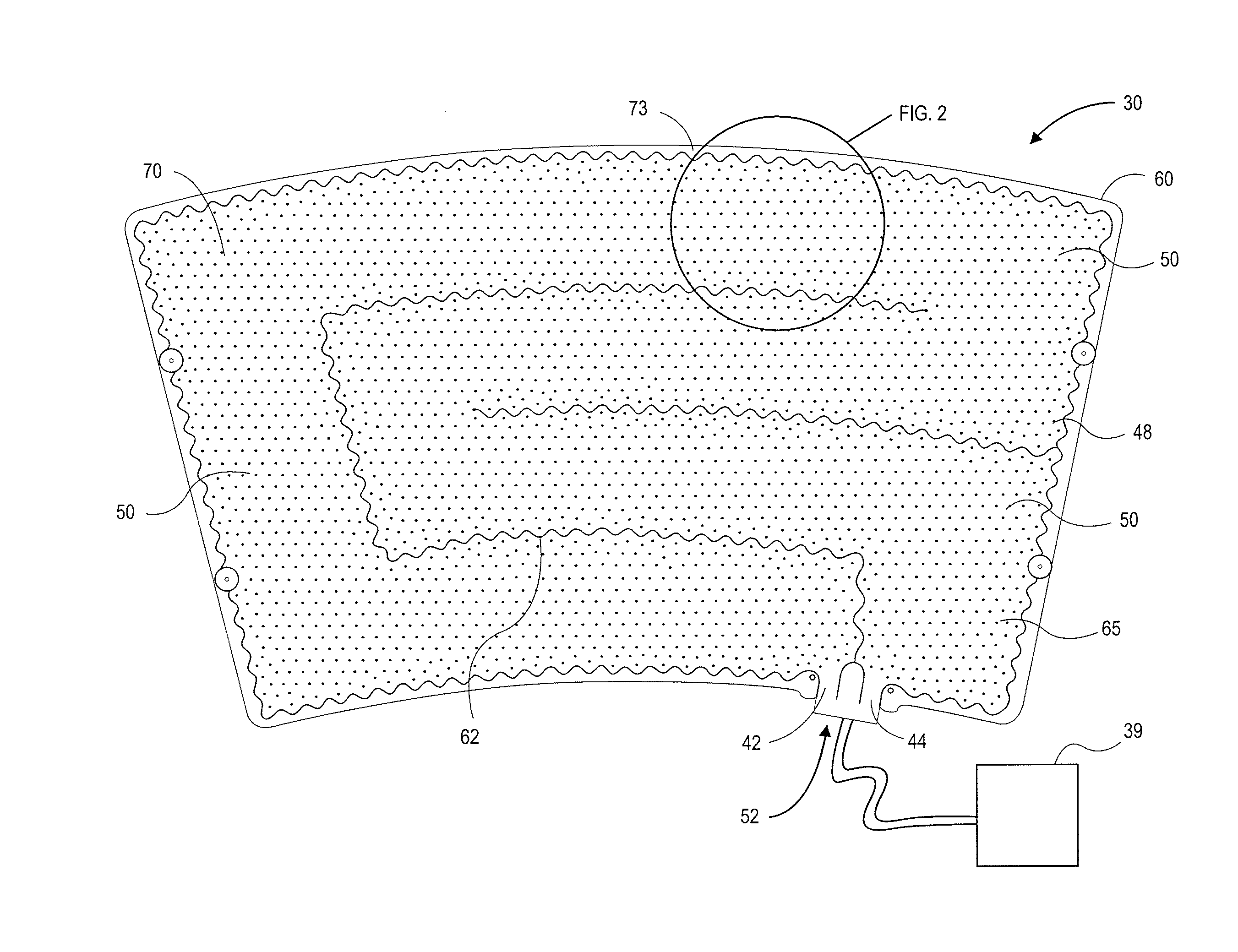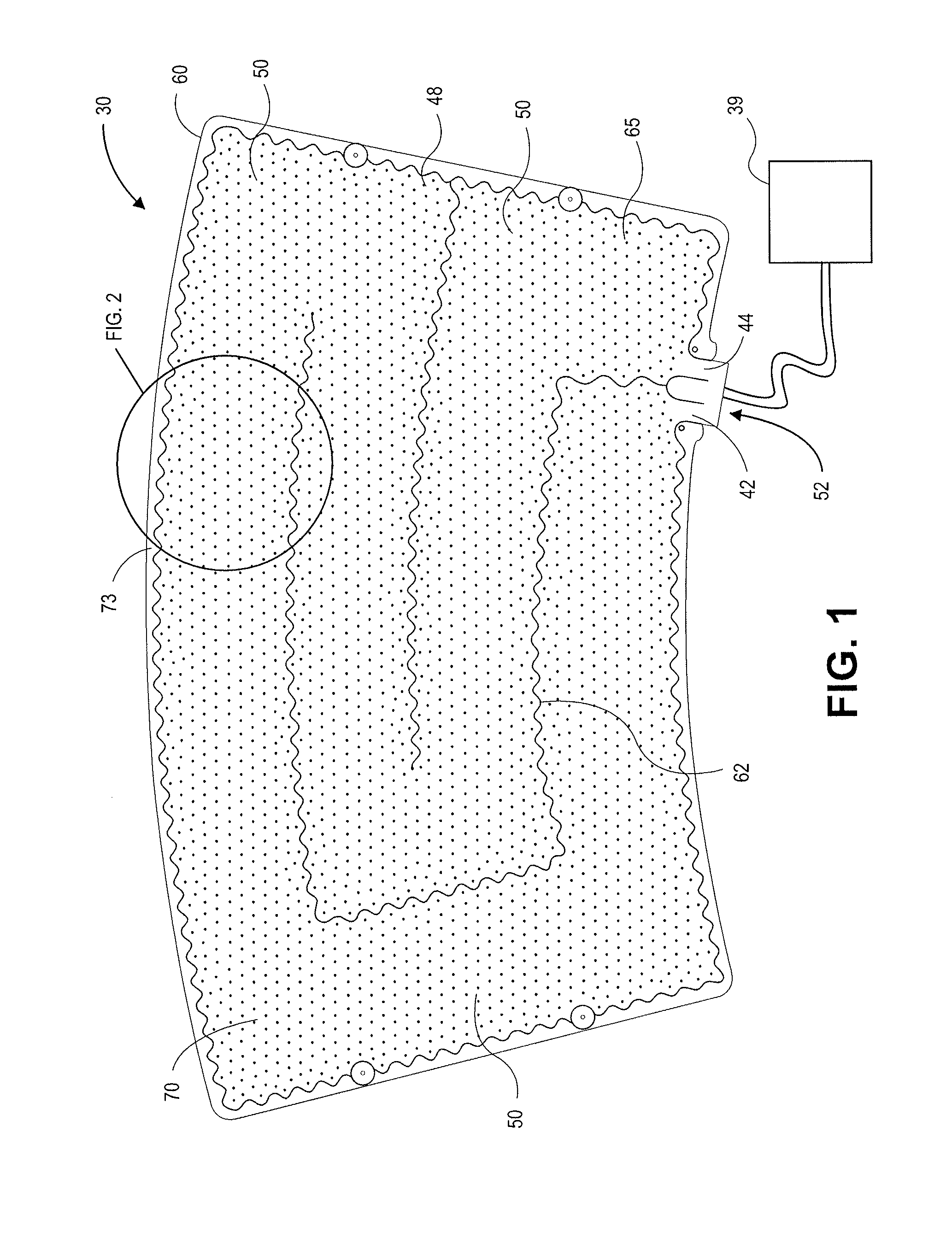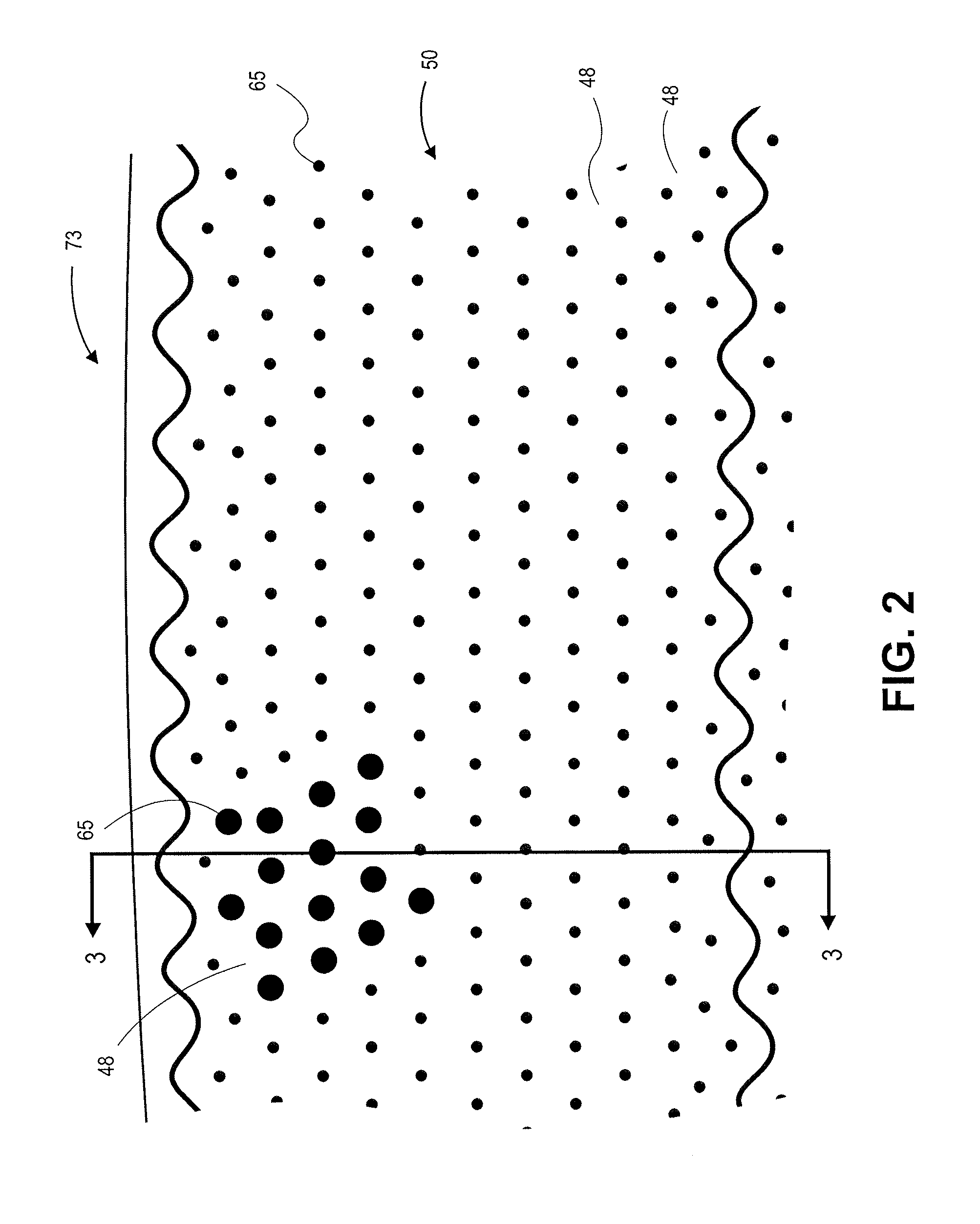Reinforced therapeutic wrap and method
a technology of re-inforced and therapeutic wraps, applied in the field of therapeutic wraps, can solve the problems of localized kinking or buckling in the bladder, inhibiting fluid flow and operation, and general type of kinking, so as to increase the resistance to kinking of the fluid bladder
- Summary
- Abstract
- Description
- Claims
- Application Information
AI Technical Summary
Benefits of technology
Problems solved by technology
Method used
Image
Examples
example 1
[0252]A first wrap, referred to in some respects as the “first bladder” or the “reinforced bladder” and labeled as “Example A” in FIG. 12, was prepared similar to that shown in FIG. 1. The exemplary first wrap included a repeating equilateral triangle dot pattern forming fluidic channels. The center-to-center dot spacing, which corresponds to the widths of the fluidic channels, was about 0.425″. The dot diameters were between about 0.16″ and 0.2″.
[0253]The wrap was connected to a standard control unit and supplied with tap water from an ice bath reservoir at approximately 19 psi. The bladder was left in a flat condition in an ambient environment.
[0254]The bladder was then tested by displacing the fluid bladder with a 2″-diameter force plate in a kink-prone region. The force plate was applied to the bladder with a screw. The force applied by the bladder against the disk was measured at different levels of displacement, generally 0.010″-0.015″ increments. The disk force was increased ...
example 2
[0265]The same two fluid bladders were tested again under the same conditions except the fluid pressure was decreased to 10 psi. The results are shown in FIG. 13 where “Example A” refers to the same first bladder with reinforcement and “Example B” refers to the same second bladder without reinforcement, as described above.
[0266]Again, the results of this Example demonstrate that the force from the first bladder is generally higher at each given displacement level. In fact, as the displacement increases, the gap between the restoring force in the first bladder and the restoring force in the second bladder increases. Thus, the fluidic channels defined by the kink-resistant dot pattern in the first bladder are shown to provide increased resistance to kinking.
example 3
[0267]The same two wraps above were provided. A third wrap having a conventional dot pattern was provided. The three wraps were filled with tap water. The water volume in the wrap per surface area of the wrap was measured versus the pressure to fill the wrap. The results are shown in FIG. 14 where “Example A”, “Example B”, and “Example C” are the results for the three exemplary wraps.
[0268]The bladder of Example A corresponds to the first bladder with reinforcement described in Example 1 above. The bladder of Example B corresponds to the second, conventional bladder of Example 1 above. Example C was similar to Example B in terms of relative dot spacing but had larger fluid bladder. FIG. 14 shows how volume / surface area corresponds to pressure for the three wraps.
[0269]The results shown in FIG. 14 illustrate that a large fluid volume (Example C) is not functional at even moderate pressures, namely, above about 15 psi. Example C generally exhibited inferior performance at low pressure...
PUM
| Property | Measurement | Unit |
|---|---|---|
| diameter | aaaaa | aaaaa |
| diameter | aaaaa | aaaaa |
| diameter | aaaaa | aaaaa |
Abstract
Description
Claims
Application Information
 Login to View More
Login to View More - R&D
- Intellectual Property
- Life Sciences
- Materials
- Tech Scout
- Unparalleled Data Quality
- Higher Quality Content
- 60% Fewer Hallucinations
Browse by: Latest US Patents, China's latest patents, Technical Efficacy Thesaurus, Application Domain, Technology Topic, Popular Technical Reports.
© 2025 PatSnap. All rights reserved.Legal|Privacy policy|Modern Slavery Act Transparency Statement|Sitemap|About US| Contact US: help@patsnap.com



